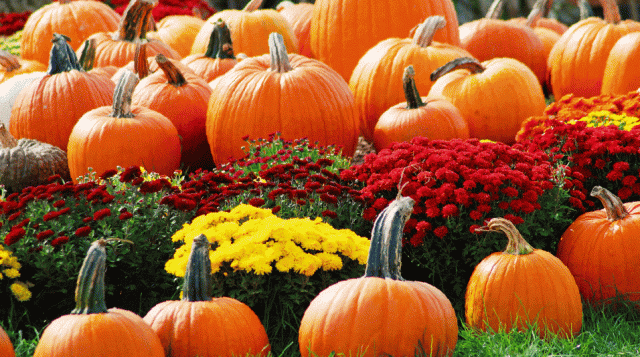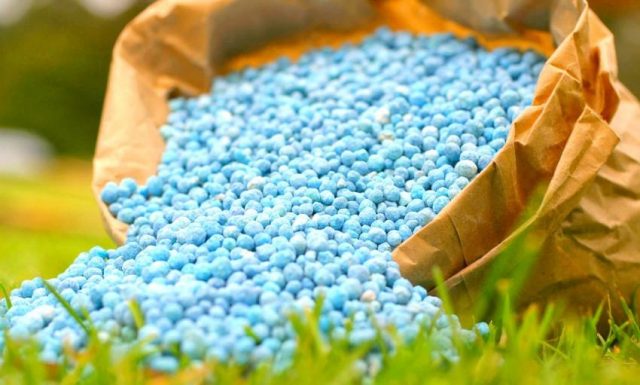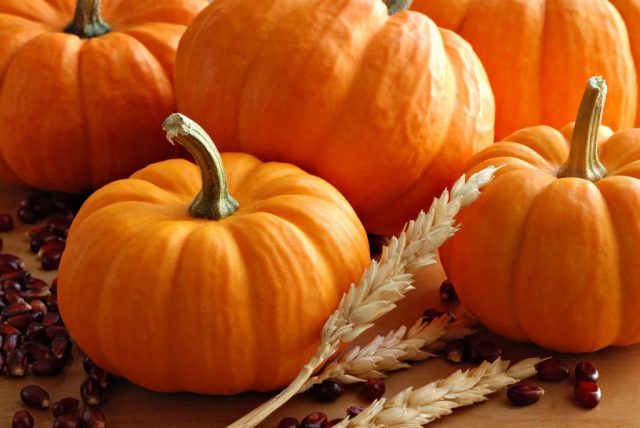Content
The cultivation of pumpkin is related to the peculiarities of the culture. The development and maturation of a large fruit requires a long wait and additional care. Many hybrid varieties are capable of producing fruits weighing up to 10 kg. With additional fertilization of the soil, the indicators increase. Top dressing of pumpkins in the open field helps to grow pumpkins weighing up to 20 kg or more.
Do I need to fertilize pumpkin
Pumpkin is an annual plant with the fruit of the same name. For the formation and ripening of fruits, the culture takes about 130 - 150 days. In addition, it is a vegetable that grows in loamy and fertile soils. One of its features is the active absorption of nutrients from the soil. The root system of the pumpkin is well branched and reaches 2 m in length.
Gardeners believe that pumpkin needs to be fed on time. According to statistics, pumpkin is one of the most powerful consumers of mineral components from the soil. In one season, a pumpkin bush takes about 40 g from 1 sq. m. That is why the soil on which the pumpkin is grown must be regularly fertilized.
If you plant a pumpkin in the same soil for several years in a row, it will lead to complete exhaustion. The soil will stop responding to the addition of additional components.
What a pumpkin needs
Pumpkin needs different nutrients at different stages. For full growth, pumpkin must be fed with fertilizers from mixtures, the main elements of which are: nitrogen, phosphorus, potassium. The application of dressings is sorted out, depending on the stages of development.
- Seed preparation. Biostimulants act as top dressing, they activate germination and affect further growth. Presowing soaking increases germination by more than 10%. It is carried out using sodium humate, succinic acid.
- Seedling processing. It is carried out after the appearance of the 3rd leaf on the stem. The goals of this technique: accelerating the development of seedlings, increasing adaptive capabilities. Also used means: Zdraven, Heteroauxin.
- Root system processing. It is carried out before direct planting on open ground. The roots are placed in growth biostimulants, which accelerates the adaptation of seedlings to new conditions. Kornevin is suitable for processing, as well as Zircon.
During the growing season, the pumpkin must be fed with mineral and organic complexes.
Organic matter is added to the ground when planting seedlings. To do this, use about 100 g of wood ash, dissolved in 5 liters of warm water. Top dressing is applied by the root method.
Before the formation of the ovary, the pumpkin is fed with organics of a different type. A solution of slurry or chicken droppings is introduced under the root.
Mineral complexes are necessary for culture during flowering and ripening of fruits. During this period, the pumpkin can be fed at least 3 times.
Mineral fertilizers for pumpkin are needed as a source of additional energy for flowering, fruit formation. At the stages of development, the plant expends a large amount of energy. Recovery is the result of obtaining nutrients from the soil.
The better to fertilize pumpkin
Pumpkin is a vegetable crop that needs different types of feeding. They help improve yields, whip growth and fruit formation. The pumpkin is suitable for organic and mineral mixtures of one-component and multicomponent types.
Organic feed contains substances in the form of organic compounds. They are rich in nitrogen, phosphorus, potassium and calcium, in various forms of content. The main organic matter increases the acidity of the soil.
Organic food consists of elements resulting from the decomposition of animal and vegetable products. They perform several tasks at the same time:
- serve as the basis for improving soil performance;
- can be used as a layer of mulch, which means that they additionally cover the surface;
- release during decomposition carbon dioxide, which is a necessary component of photosynthesis of plant cultures;
- positively affect the development of soil bacteria or microorganisms that are in close relationship with the root systems of vegetable crops.
Examples of organic class: manure, peat, compost, humus. Each of the types of organic fertilizers goes through several stages of preparation before acquiring the final composition.
It is important to feed the pumpkin with organic matter at the stage of laying future fruits. In addition, they serve as the basis for soil saturation, improve the composition and enrich it.
Mineral dressings are inorganic compounds that are saturated with nutrients. The basis of mineral fertilizers is useful mineral salts.
For mineral fertilizers, a classification has been created, they are divided by type:
- simple (one-sided);
- complex (complex or multilateral).
Simple one-component formulations are: superphosphate, potassium chloride, urea. Complex contains 2 or more components. The choice between simple and complex mixtures is made based on different characteristics.
At the time of sowing, any soil already contains a set of nutrients. The composition depends on the climatic conditions, the characteristics of the region. Soils can have various disadvantages: some are rich in nitrogen, others have a maximum content of phosphorus and potassium. As a rule, there is a deficiency of magnesium on sandy soils, while chernozem soils suffer from a lack of manganese and molybdenum. Mineral fertilizers are designed to increase yields and improve the taste of the pumpkins obtained.
By the type of feeding, they can be foliar and basal.
- Foliar methods of introduction: spraying of stems and leaves, processing of tops, buds.
- Rooting:watering with specially prepared solutions into the well or near the well space.
Solid forms of fertilizers are applied when loosening the soil. The granules are scattered over the surface, then the top layer is carefully dug up. With rains and systematic irrigation, the granules gradually settle and get to the root system. In this way, prophylactic formulations are introduced. They are not used for quick action.
The pumpkin can be fed with liquid solutions in one of the following ways:
- the prepared solution is poured into the main stem in small portions for half an hour;
- the solution is poured into the grooves dug around the main stem.
Feeding schedule
The amount of dressings is determined after analyzing a number of factors. It depends on climatic conditions as well as on the condition of the soil. The main fertilization is determined by the compiled schedule.
During landing on open ground | End of spring, beginning of summer |
After disembarkation | After 10 days, subject to the availability of 5 real sheets |
Before flowering | Beginning - mid-July |
During flowering | July |
During the fruiting period | End of August - beginning of September |
How to feed properly
At each stage of plant growth, not only the components of the applied mixtures differ, but also the methods of application.The plant should not be sprayed during the flowering period, as this can lead to loss of buds.
Pumpkin feed is applied not only to the central stem. They may be needed in the area located under the grown whip. The fact is that many pumpkin varieties have a tendency to grow lashes. The scourges are on the ground. If they are left unchecked for a while, then any of the processes can take root on their own and form a new side bush. In this case, summer residents do not seek to get rid of a spontaneously rooted shoot, but prefer to grow it into an adult plant. At the stage of formation, such a pumpkin also needs feeding. Long summer and warm early autumn will give the bush the opportunity to form and bring the pumpkin to technical ripeness, if the plant is properly fed with mineral complexes.
After landing
After planting the seedlings, the 5-6th leaf is expected to appear. After sowing the seeds, you can feed the shoots earlier, with the formation of the 2nd - 3rd leaf.
Mineral fertilizers are applied according to the formula: 10 g of urea per 10 liters of water. This solution is poured over the pumpkin at the root.
Agricultural technicians recommend planning top dressing in advance: during the period before flowering, it is necessary to feed the pumpkin with organics and minerals, while there should be a short break between the addition of mixtures.
- Organic: 1 part manure, 10 parts water, 2 tbsp. wood ash. This solution is shaken vigorously and poured into the root.
- Mineral: superphosphate, potassium sulfate, ammofoska - 20 g per 10 liters of water.
During flowering
During flowering, the pumpkin can be additionally fed with potassium solutions. At this point, the potassium supplement will not be overkill for the pumpkin.
During the period of fruit formation
At the stage of development and ripening of fruits, pumpkin also needs fertilizing with minerals. It must be fertilized with solutions of a complex type:
- superphosphate - 15 g;
- potassium chloride - 20 g;
- water - 10 liters.
Foliar dressing
Foliar dressings for pumpkin are suitable during the pre- or post-flowering phase. The resulting buds and blossoming flowers are not sprayed. In addition, foliar feeding has a number of limitations:
- pumpkin is not fed during the day, late evening is suitable for processing;
- carefully monitor the concentration of the solution so as not to burn the sheet plates;
- solutions are sprayed at a distance of 15 - 20 cm.
To do this, 10 g of urea is dissolved in 10 liters of water, sprayed in cloudy weather in the evening.
Feeding pumpkin with folk remedies
Compositions prepared according to folk recipes are more effective. This is due to the fact that they begin to act much faster: and the result becomes immediately noticeable.
- Ammonia. The product is prepared from 50 ml of ammonia and 5 liters of water. The solution can be fed to pumpkin if you suspect soil acidification.
- Yeast infusion. 150 g of raw yeast, 10 l of water, a few tablespoons of sugar are infused until completely dissolved, fed at the root. This solution is used if the soil needs additional nitrogen.
- Infusion of nettle. Used to repel pests. The mown nettle is placed in a barrel, poured with warm water and insisted for several days. After infusion, the mixture is dissolved in water according to the formula: 1 to 10 and watered under the root.
Conclusion
Top dressing for pumpkin in the open field should be timely and useful. With a sufficient amount of fertilizer on the site, a significant crop can be harvested.















